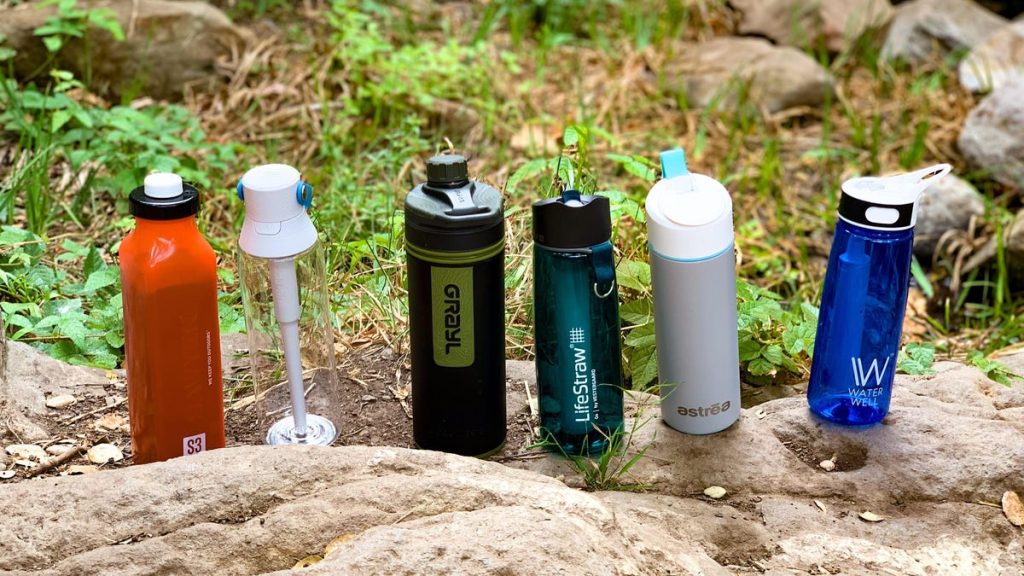Choosing the right reusable water bottle, especially one with filtration capabilities, requires careful consideration of several key factors. These factors, which directly impact user experience, include the effectiveness of the filtration system, the materials used in construction, the taste of the filtered water, the ease of use and maintenance, and the overall practicality for intended activities. A thorough evaluation of these criteria will ensure that the chosen bottle meets individual needs and provides safe and palatable drinking water in various situations.
Filtration is paramount when dealing with potentially contaminated water sources. A reliable filter should effectively remove harmful bacteria, viruses, protozoa, and other impurities, rendering the water safe for consumption. The filter’s capacity, indicating the volume of water it can purify before requiring replacement, is also crucial, especially for extended trips or frequent use. The cost and availability of replacement filters should be factored into the decision-making process, as these represent recurring expenses. Finally, the clarity of the filtered water should be assessed – a good filter should leave no visible particles or sediment behind.
The materials used in the bottle’s construction significantly influence its durability, weight, and potential impact on the taste of the water. BPA-free plastic is a common choice, offering lightweight portability but potentially susceptible to damage from drops or impacts. Stainless steel, on the other hand, provides superior durability and resistance to dents and scratches, though it adds weight. The material’s weight becomes a critical consideration for activities like hiking or backpacking, where minimizing carried weight is essential.
Taste is a subjective but crucial factor. Ideally, a filtered water bottle should produce clean, fresh-tasting water without any lingering mineral odors or chemical aftertastes, such as chlorine. The chosen filtration system should not impart any unwanted flavors to the water, ensuring a pleasant drinking experience. Tasting the water filtered through the bottle is highly recommended before making a purchase whenever possible.
Ease of use encompasses various aspects, from the initial assembly and filter installation to the daily operation of the bottle. Replacing the filter should be a straightforward process, and the bottle should be designed for convenient filling and drinking. The flow rate of water through the straw or mouthpiece should be adequate, avoiding the need for excessive tilting or squeezing to access the water. A smooth, effortless drinking experience is essential for practical everyday use.
Cleanup and maintenance are vital for hygiene and the longevity of the bottle. Dishwasher-safe components simplify cleaning, while easily disassembled parts allow for thorough scrubbing and drying. The storage requirements of the bottle should also be considered – a compact and easily storable design is preferable, especially for travel or limited storage space. Clear instructions on proper cleaning and maintenance procedures should be provided by the manufacturer.
Choosing a suitable filtered water bottle requires aligning these criteria with individual needs and intended usage scenarios. For backpacking trips, a lightweight bottle with a high-capacity filter capable of purifying questionable water sources is ideal. For everyday use with tap water, a simple, easy-to-clean bottle with a basic filter to improve taste and remove chlorine may suffice. The investment in a filtered water bottle should be viewed as a long-term commitment to hydration and health, and careful consideration of these factors will ensure a satisfying and beneficial purchase. Don’t be swayed by marketing hype – focus on the features that truly matter for your specific needs.
Consider the frequency of use and the environment in which the bottle will be used. A rugged, high-capacity filtration bottle designed for wilderness survival would be overkill for occasional use in an office setting. Conversely, a lightweight plastic bottle with a basic filter might not be suitable for extended camping trips in areas with questionable water sources.
Evaluate the filter’s effectiveness against specific contaminants relevant to your intended use. If you anticipate encountering giardia or cryptosporidium in backcountry water sources, ensure the filter is certified to remove these specific pathogens. For urban use, a filter that removes chlorine and improves taste may be sufficient.
Pay attention to the bottle’s design features, such as the size and shape of the mouthpiece, the presence of a carrying handle, and the ease of opening and closing the lid. These seemingly small details can significantly impact the overall user experience.
Research the manufacturer’s reputation and warranty policy. Opt for a reputable brand known for producing quality products and offering reliable customer support. A good warranty can provide peace of mind in case of defects or malfunctions.
Compare prices and read user reviews before making a purchase. Online reviews can offer valuable insights into the bottle’s performance, durability, and ease of use in real-world scenarios. Price comparison websites can help you find the best deal on the model that meets your needs.
Remember that a filtered water bottle is an investment in your health and well-being. Taking the time to carefully evaluate your needs and research available options will ensure you choose a bottle that provides safe, clean, and great-tasting water for years to come. Don’t settle for the first bottle you see – take your time and make an informed decision.
Consider the long-term cost of ownership, including the price of replacement filters and any necessary cleaning accessories. While a higher initial price might seem daunting, a durable bottle with readily available and affordable replacement parts can be more economical in the long run.
Think about the environmental impact of your choice. Opt for a reusable bottle made from sustainable materials and a filter that can be recycled or disposed of responsibly. Minimizing plastic waste is a crucial consideration when choosing any reusable product.
Explore different filtration technologies available, such as activated carbon filters, ceramic filters, and ultraviolet purifiers. Each technology has its strengths and weaknesses in terms of effectiveness against different contaminants, flow rate, and lifespan.
Consider the bottle’s insulation capabilities if you require temperature regulation. Some filtered water bottles offer insulation to keep your water cold or hot for extended periods, which can be particularly beneficial in extreme temperatures.

